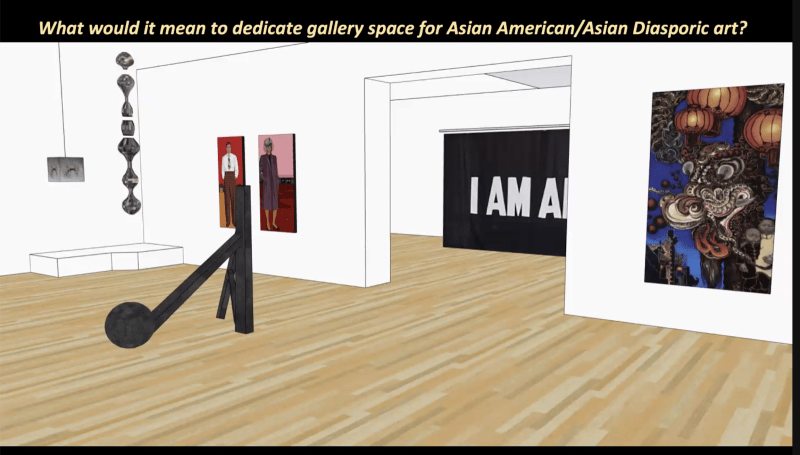On Feb. 16, just a few days following Lunar New Year celebrations, the Cantor Arts Center at Stanford University introduced its new Asian American Art Initiative (AAAI). An official launch event was led by the founding co-directors of the initiative: Aleesa Pitchamarn Alexander, an assistant curator of American Art at the Cantor, and Marci Kwon, an assistant professor in Stanford’s Department of Art and Art History. Kwon has had plans for a project like AAAI ever since she came to Stanford four years ago, and she has been working on it with Alexander for over two years now.
A symposium and launch exhibition for the initiative is planned for the fall of 2022. The curatorial program looks to foster collaborative projects with campus faculty and programs such as the Asian American Studies program of the Center for Comparative Studies in Race and Ethnicity, as well as with external institutions. Other future plans include the creation of research workshops with scholars, artists and community members; digital scholarships; and a course research laboratory where students can contribute to digital documentation of Asian American art. Funding to hire graduate students is also in the works.
The co-directors hope the initiative will become a leading collection of Asian American art in the country. Kwon pointed out the lack of representation for Asian American figures in the U.S. art industry. The Cantor’s recent acquisition of artwork by Ruth Asawa, Michael Jang and Ian Cheng, as well as many pieces from art collector Michael Donald Brown’s collection, reflects the initiative’s commitment to the preservation and study of art by Asian American and Asian diaspora artists. Currently, there is only one other academic institution, New York University, that has a center dedicated to Asian American Art, and it focuses on contemporary pieces only.
Regarding the content of the initiative, the curatorial program is planning to hold a wide range of exhibitions, including limited-time showings, smaller rotations of permanent collections and commissions from contemporary artists. The meaning of the term “Asian American” also came up as well when discussing the content for AAAI. Coined during the Third Liberation Front’s formation, “Asian American” is an umbrella term that covers a large variety of ethnic groups. Thus, the museum plans to acquire works that will be reflective of the diversity of the artists who identify as Asian American. According to Alexander, the focus on Asian diaspora and the nature of these diasporic communities means the initiative will not be limited by borders nor any ideas of a nation-state. This launch comes at a time when Anti-Asian sentiment across the country is increasing, a trend which emphasizes the need for a greater platform to share the stories of Asian Americans and other diasporic communities who have been affected by the racial framing of this country. As Kwon stated during the online event with the Stanford community, “For me, this project has never been about [just] visibility within an institution or academic discourse; rather, it’s about how we care for these artists in the best way we know how; by preserving their work in archives and engaging their very practices with rigor and sensitivity.” As an encyclopedic museum, the Cantor Center’s purpose is to illustrate the “full spectrum” of human creativity, and Kwon and Alexander hope the initiative will become a valuable resource for students conducting research given the lack of accessibility and representation of Asian American art in wider society.
